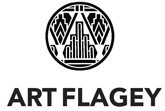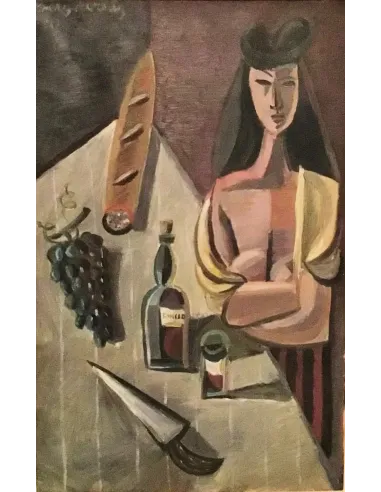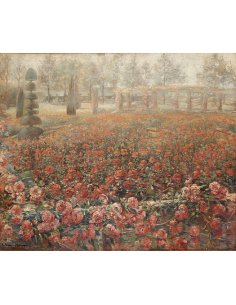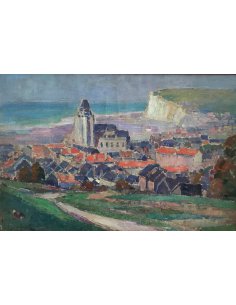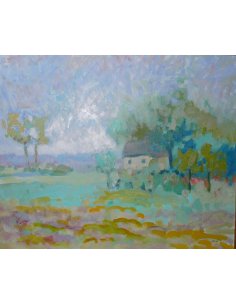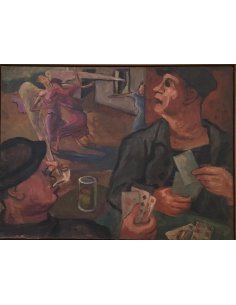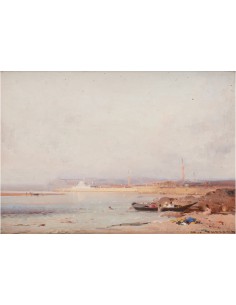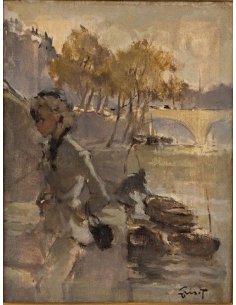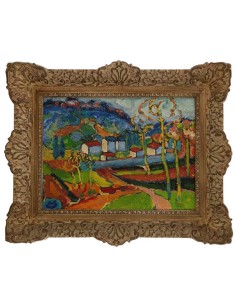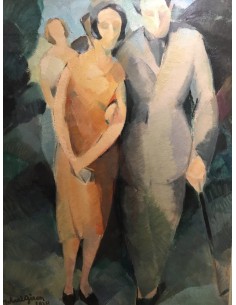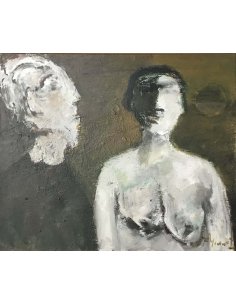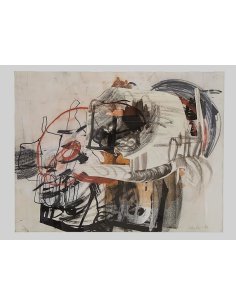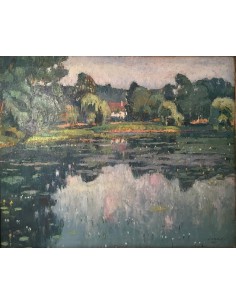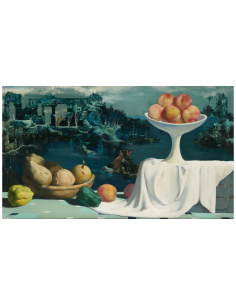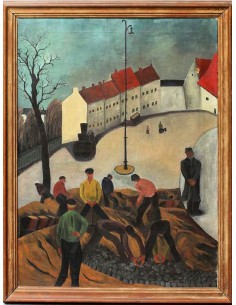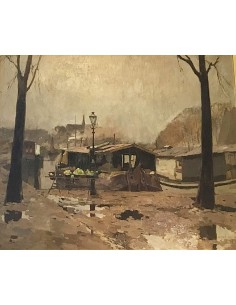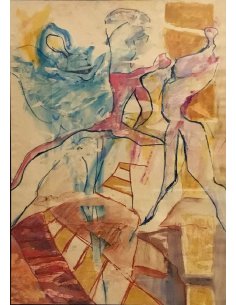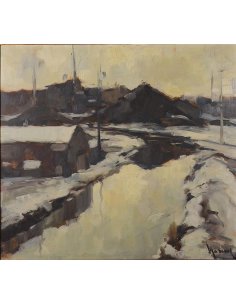Painting Buveuse de Rancio (1947) by the Belgian painter Serge Creuz.
The expressive oil painting Buveuse de Rancio (1947) by Belgian artist Serge Creuz, on offer at ART FLAGEY Kunsthandel Berlin, depicts a female figure in a reduced, cubist style. On the set table lie a baguette, a knife, grapes, and a bottle of "rancio" – a traditional wine from the South of France.
The calm composition combines geometric clarity with emotional distance – characteristic of European post-war modernism.
The inscription "Argelès (Po)" on the painting refers to the French coastal town of Argelès-sur-Mer in the Pyrénées-Orientales department, near the Spanish border. "Po" is a common abbreviation for the department.
Argelès-sur-Mer, with its mixture of Mediterranean, Pyrenees and southern light, inspired numerous post-war artists – an atmospherically charged setting that is tangibly reflected in the work of Serge Creuz.
About the artist: Serge Creuz (1924 - 1996)
Serge Creuz was an important Belgian painter, illustrator, and scenographer known for his diverse contributions to the art scene. He studied at the Superior Institute of Decorative Arts in La Cambre, Brussels, and began engraving and illustrating books under the direction of Joris Minne.
He worked for the Théâtre National de Belgique and the Belgian broadcaster RTBF, among others. He also founded the cultural center "La Bellone" in Brussels, which is dedicated to the documentation and archiving of theater.
Serge Creuz was most notably a member of the Jeune Peinture Belge ("Young Belgian Painting"), an influential artists' association founded in Brussels in 1945. It brought together young Belgian artists seeking new, modern forms of expression after the Second World War and is considered a pioneer of modern Belgian postwar art.
Members like Creuz shaped a distinctive Belgian modernism with expressionist, figurative, and sometimes abstract painting styles. Exhibitions in Brussels, Paris, Amsterdam, and Oslo made the "Jeune Peinture Belge" internationally known.
